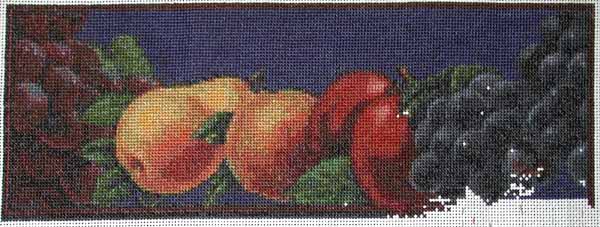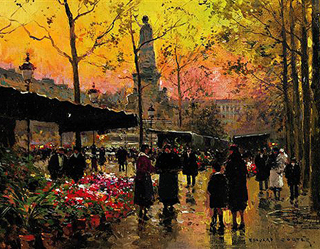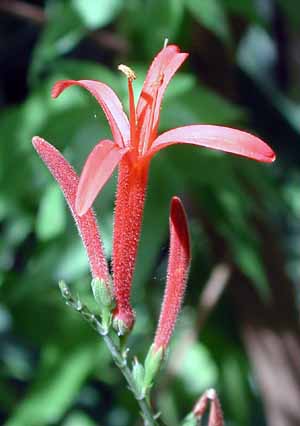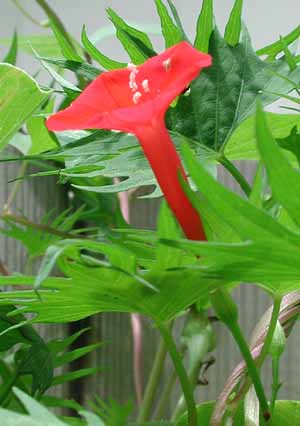
I really tried to finish the fruit crate label in time for the framing sale. I took most of yesterday off and just stitched and stitched. I gave up about 10 PM last night with probably only 300-400 stitches left to do. I could possibly still finish it today and get it to Ginger’s but it will need to be washed, dried, and ironed so I’m just going to let it go. There will be another sale, and anyway, it’s such a small piece, it won’t be as expensive to frame as the other Scarlet Quince pieces I’ve done.
I felt very decadent stitching in the daytime — I usually only stitch at night. I watch (sort of — you know) movies while I stitch, and when I turned the TV on, there was “It Came From The Sea” with the beautiful Faith Domergue battling giant octopi and male prejudice about what women are capable of (it would have been more convincing if she hadn’t screamed like a banshee when she first saw the monster, but I guess ya gotta have the girl scream). I didn’t notice the first time I saw this movie but they economized by only building one octopus arm. Then I watched a lot of movies I had recorded at various times. There was “The Green Years” with a young Dean Stockwell, which was terrible and I don’t know why I recorded it. “Ecstasy”, which is the German film in which Hedy Lamar had a nude scene (she goes swimming, leaving her clothes draped over her horse’s saddle and doesn’t tie up the horse — bad plan). Though it had subtitles, there was almost no dialog so not a problem to watch while stitching. Unhappy ending, BTW. Also “Brief Encounter”, made in wartime England with Trevor Howard. He’s a doctor who meets a woman at a train station and they fall in love although they both have families. They spend about three afternoons together very innocently making themselves thoroughly miserable, then he takes himself off to Africa to avoid any more temptation. After all this I need a break from stitching, or at least from movies. As you can probably tell, Turner Classic Movies is my channel.

 You may have seen this in the news recently. Someone left it at a Goodwill in Maryland, where the staff would normally price something like this at about $100. However, they noticed that it had an old frame and a brass plaque and checked with Sotheby’s and discovered it was valuable. It later sold at auction for $40,000. Amazing. Things like that are always turning up on Antiques Roadshow — someone brings in a painting that their mother bought at a thrift store for $1 and it turns out to be by an obscure (to me) but highly collectible artist. The question is, why doesn’t it happen to me? When I go to the Blue Hanger all I see is awful trash. There’s apparently a knack (and it probably requires a lot more time at thrift stores than I want to spend).
You may have seen this in the news recently. Someone left it at a Goodwill in Maryland, where the staff would normally price something like this at about $100. However, they noticed that it had an old frame and a brass plaque and checked with Sotheby’s and discovered it was valuable. It later sold at auction for $40,000. Amazing. Things like that are always turning up on Antiques Roadshow — someone brings in a painting that their mother bought at a thrift store for $1 and it turns out to be by an obscure (to me) but highly collectible artist. The question is, why doesn’t it happen to me? When I go to the Blue Hanger all I see is awful trash. There’s apparently a knack (and it probably requires a lot more time at thrift stores than I want to spend).






